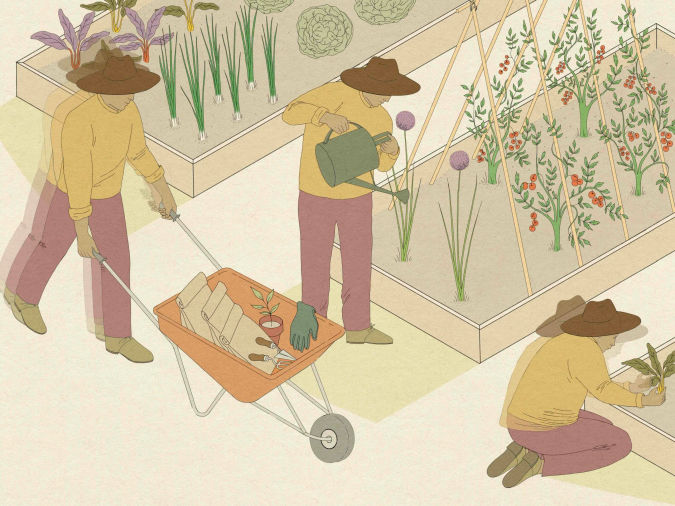Caring for a parent or older family member can be rewarding, but it can also be mentally, emotionally and physically challenging. Not to mention, there often comes a time when older adults need extra assistance following illness or surgery, or social engagement that their family caregiver is unable to provide.
For many caregivers and their families, respite care at a senior living community – also referred to as a short-term stay or short-term assisted living – is the right solution.
Here are six reasons to consider a short-term stay and respite care for seniors.
1. Caregiver relief
In the U.S., there are more than 40 million unpaid caregivers, nine in ten of whom are caring for an aging relative – usually a parent – which requires a commitment of time and energy that can be exhausting.
Caring for an older family member – on top of handling other daily tasks and responsibilities – can leave you frazzled and wiped out, often neglecting your own needs. Caregivers need occasional breaks to recharge and avoid caregiver burnout (also known as caregiver stress syndrome).
Symptoms of caregiver burnout include exhaustion, depression and resentment. Caregiver burnout can also result in you no longer being able to provide the level of care your family member needs.
A short-term stay allows caregivers to rest and rejuvenate for days or weeks at a time. This might mean a couple days off to attend to your personal well-being or a weeklong vacation – all while having the peace of mind that your family member is receiving the attention and support they require.
2. Recovery from illness or injury
Respite care can be an excellent option for seniors recovering from surgery, illness, hospitalization or injury. Assisted living communities provide a safe and comfortable environment for older adults until they’re ready to return home. Daily tasks like cooking meals, housekeeping and transportation are taken care of by a dedicated staff, so short-term stay guests can relax and prioritize their happiness and well-being.
Many senior living communities offer care services like medication management and assistance with bathing, grooming and getting dressed, all of which can help older adults recuperate more quickly and comfortably than they would at home. And having a team of trained professionals on-site means faster response time to any concerns or complications that may arise during recovery.
When deciding between returning home and respite care following a hospital or rehab stay, you should consider both how long recovery will take and what challenges your family member will face along the way. Safety checklists like this one can offer guidance when deciding which recovery option is the best fit for your situation.
3. Social engagement
Loneliness and social isolation can lead to major health issues for older adults, including depression, high blood pressure and cognitive decline. This can be especially true during winter when the weather makes spending time outdoors more challenging. But research suggests that socializing can improve mood and cognitive function, and it’s often associated with higher rates of exercise.
Short-term respite care at an assisted living community provides a variety of fun activities and social events to keep seniors engaged. Painting classes, book clubs, movie showings and game nights all offer seniors a chance to connect with others and form new relationships with people who share their interests – relationships that can provide lasting fulfillment and emotional support long after they no longer need short-term senior care.
4. Trial run before making the move
For seniors and caregivers considering whether or not to make the move to assisted living, a short-term stay can provide an idea of what their experience would be like. Any big life transition can seem overwhelming, but getting a preview of what day-to-day life is like in a senior living community can help ease any concerns. Daily social opportunities like craft classes, yoga and group dinners are some examples of what residents look forward to every day. A trial run can help you make a more informed decision about your family member’s future.
5. Convenience and flexibility for emergencies
Sometimes unforeseen events – a personal health emergency, another family member falling ill, a crisis at work – can suddenly require caregivers to attend to other aspects of their lives. Assisted living communities can often accommodate short-term stay guests promptly and for flexible periods of time, allowing you to focus on other concerns while knowing that your family member is in trusted hands until you’re able to resume regular caregiving duties.
6. Nutritious (and delicious) dining
Finally, senior living communities can provide a variety of meal options that many caregivers might not have the time or ability to prepare at home. Menus are designed with the health and nutritional needs of seniors in mind. Not only does this mean your family member will be receiving delicious meals during their stay, but they may also discover a new favorite dish.
Respite care can benefit everyone
For caregivers, self-care isn’t a luxury; it’s a necessity. To provide proper care for a parent or older family member, it’s important to also take care of yourself. With all the benefits and amenities assisted living communities have to offer, a short-term stay can be a positive experience for seniors and caregivers alike.
You might also like
Want to learn more about life at Atria Senior Living?


